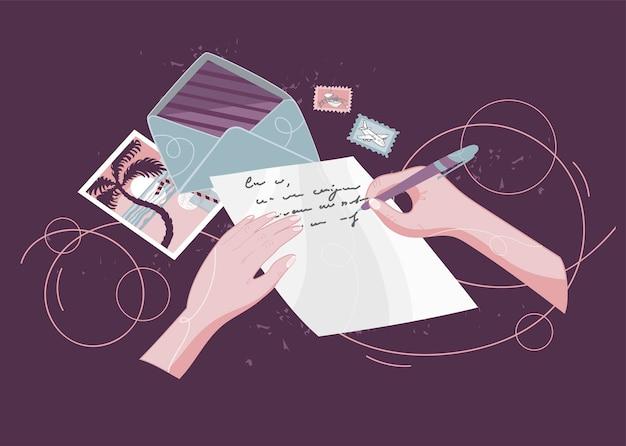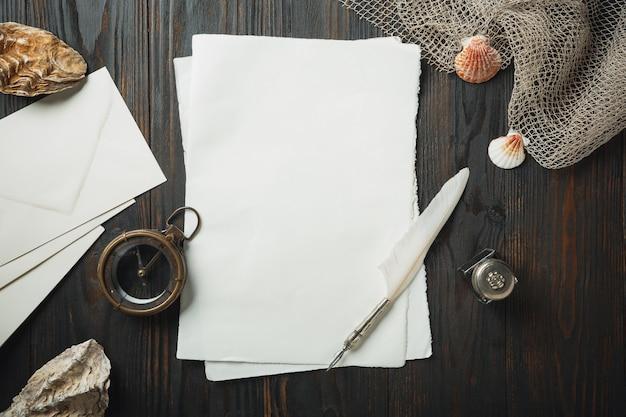In this digital age, where emails and instant messaging have become the norm, the art of writing a correspondence letter may seem a bit old-fashioned. However, the skill of crafting a well-written and impactful letter is still highly relevant, especially in professional settings. Whether it’s writing to a potential employer, a client, or even a friend, mastering the art of correspondence can make a significant difference in how your message is received.
But what exactly is correspondence? In simple terms, it refers to the exchange of written communication between two or more parties. It involves conveying thoughts, information, or ideas in a clear and concise manner. Effective correspondence is crucial to maintaining good relationships and ensuring that your message is understood accurately.
This blog post will serve as a comprehensive guide on how to write a correspondence letter. We’ll cover the fundamental principles of correspondence, discuss the essential elements of an effective letter, and provide practical tips to help you master the art. So let’s dive in and explore the world of correspondence letter writing in 2023!

How to Craft a Delightful Correspondence Letter
Whether you’re penning a letter to a long-lost friend or reaching out to a potential employer, correspondence letters can be the perfect way to showcase your personality and make a lasting impression. Crafting a well-written correspondence letter requires finesse, humor, and a touch of American charm. So, grab your favorite pen or fire up your trusty keyboard, and let’s dive into the art of letter writing.
The Letterhead: A Dash of Pizzazz
When it comes to the letterhead, the goal is to strike a balance between professionalism and personality. Start by elegantly displaying your name, address, and contact information at the top of the page. Now, it’s time to sprinkle in some pizzazz. Consider using a stylish font that reflects your character (please, no Comic Sans) and add a subtle border or decorative element to frame your masterpiece. Remember, you want your recipient to be excited to open your letter, not mistake it for dazzling spam.
The Greeting: A Warm Welcome
First impressions matter, even in the world of correspondence letters. Begin your epistle with a warm and friendly greeting. If you’re writing to someone you know well, feel free to unleash your inner wordsmith and unleash a witty one-liner. For more formal occasions, stick to a respectful and professional tone, but don’t be afraid to inject a hint of your delightful personality. After all, who said formality can’t be fun?
Body: Wit, Charm, and Pertinence
Now that your recipient is hooked, it’s time to work your magic in the body of your correspondence letter. Start by establishing a flow that is easy on the eyes – keep your paragraphs short and sweet, allowing each idea to breathe freely. Maintaining a conversational tone, pepper your words with a suitable dose of humor, puns, or clever anecdotes. Just remember, tasteful humor goes a long way, but avoid going overboard – it’s a letter, not a stand-up comedy routine.
Structure: The Magic of Subheadings
To ensure your reader’s attention doesn’t waver, employ the power of subheadings. These neat little signposts allow you to organize your thoughts and make your letter an enjoyable and engaging read. If you’re sharing multiple ideas or discussing various topics, create clear and concise subheadings to guide your reader along. Plus, they make you look organized and professional – it’s a win-win!
Closing: The Sweet Finale
As your correspondence letter draws to a close, finish with flair. Bid farewell in a way that leaves a lasting impression. Just like your greeting, tailor your closing to suit your relationship with the recipient. If you’re writing to a dear friend, unleash your creativity and end with a heartfelt quote or an inside joke only the two of you would understand. For formal letters, maintain a respectful tone while still showcasing your delightful personality, because let’s face it, you’re pretty amazing.
The Signature: Seal It with Style
Ah, the signature – your final touch of class. Once you’ve poured your heart out onto the page, it’s time to wrap it up like a well-crafted gift. Choose a closing phrase that aligns with the overall tone of your letter, such as “Warmly,” “Best regards,” or “Yours truly.” And don’t forget to elegantly sign your name beneath it. You can even add a swirly underline or a doodle if it feels right. Just remember, keep it professional, stylish, and unmistakably you.
So there you have it – the secret sauce to crafting a delightful correspondence letter. From the letterhead to the signature, every element presents an opportunity to showcase your wit, charm, and uniquely American style. So, grab your pen, unleash your creativity, and let your correspondence letter work its magic. Happy writing, my fabulous friend!

FAQ: How do I write a correspondence letter
Can you say email correspondence
Email correspondence refers to the exchange of messages between individuals or organizations through electronic mail (email). It is commonly used in professional and personal settings as a convenient and fast method of communication. Instead of writing a traditional letter, you can compose an email to convey your thoughts, requests, or information to the recipient.
What is the principle of correspondence
The principle of correspondence emphasizes the need for clear and effective communication in correspondence letters. It means that the content of the letter should accurately reflect the purpose, message, and tone intended by the sender. Following this principle ensures that the recipient understands the information conveyed in the letter without confusion or ambiguity.
What is the meaning of correspondence details
Correspondence details refer to the specific information included in a letter or email. This typically includes the sender’s and recipient’s names, addresses, phone numbers, and email addresses. Additionally, correspondence details may also include the date of the letter, reference numbers, and any necessary attachments or enclosures relevant to the communication.
How do I write a correspondence letter
Writing a correspondence letter involves several key steps:
-
Choose the appropriate format: Determine whether a formal or informal letter format is suitable based on the purpose and recipient of the letter.
-
Include the necessary details: Begin the letter with your contact information, followed by the recipient’s details. Clearly state the date of the letter.
-
Compose a polite salutation: Address the recipient using appropriate titles and names, such as “Dear Mr. Smith” or “Dear Jane.”
-
Introduce yourself and state the purpose: In the opening paragraph, briefly introduce yourself and state the reason for writing the letter.
-
Provide clear and concise content: Organize the body of the letter into paragraphs, each focusing on a specific point. Use clear language, avoid jargon, and provide necessary details to support your message.
-
Conclude the letter professionally: In the closing paragraph, summarize your key points and express any necessary requests or next steps.
-
End with a polite closing: Sign off the letter with a polite closing, such as “Sincerely,” followed by your name and title (if applicable).
-
Proofread and edit: Always review your letter for grammar, spelling, and punctuation errors before sending it to ensure a professional appearance.
What is effective correspondence
Effective correspondence refers to the ability to communicate clearly and efficiently through written letters or emails. It involves utilizing appropriate language, organizing thoughts logically, and conveying the intended message concisely. Effective correspondence focuses on maintaining a professional tone, providing relevant details, and ensuring the recipient comprehends the information or request conveyed in the communication.
What is correspondence math
Correspondence math, also known as mapping or function notation, is a concept in mathematics that relates elements from one set to another. It defines a relationship between two sets, where each element from the first set corresponds to one or more elements in the second set. Correspondence math is used to represent relationships and patterns, making it a valuable tool in various mathematical applications.
What is secretarial correspondence
Secretarial correspondence refers to the written communication handled by a secretary or administrative professional on behalf of an individual, organization, or department. It commonly includes tasks such as drafting letters, emails, memos, and other written documents. Secretaries ensure proper formatting, correct grammar, and accurate content to maintain clear and effective correspondence between parties.
What is client correspondence
Client correspondence encompasses the communication conducted between a business or service provider and its clients. It involves exchanging messages, updates, inquiries, or resolving issues related to the products or services offered. Client correspondence aims to build and maintain a positive relationship with clients, address their concerns, and provide necessary information or support throughout their interaction with the business.
